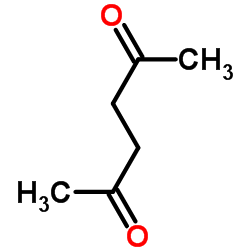Exposure to 2,5-hexanedione can induce neural malformations in chick embryos.
Xin Cheng, Guang Wang, Zheng-lai Ma, Yun-yu Chen, Jing-jing Fan, Zhao-long Zhang, Kenneth Ka Ho Lee, Huan-min Luo, Xuesong Yang
文献索引:Neurotoxicology 33(5) , 1239-47, (2012)
全文:HTML全文
摘要
Worldwide, n-hexane is an organic solvent widely used in numerous industries such as chemical engineering, pharmaceutical and cosmetic industry. 2,5-Hexanedione (2,5-HD) is the main metabolite of n-hexane. It is now gradually recognized that chronic exposure to n-hexane could harm the health of people. Nevertheless, it is still unclear whether or not 2,5-HD is potentially teratogenic during pregnancies. In this study, we investigated the effects of 2,5-HD exposure on embryonic development in the chick embryo. We first determine the effect of 2,5-HD on neurodevelopment - specifically looking for neural tube defects in the forebrain, midbrain, and also for malformation in the eyes. We established that in the presence of 2,5-HD, the dorsal neural tubes were malformed during the closure of the neural folds. In addition, exposure to 2,5-HD could also inhibit neural differentiation as revealed by immunofluorescent staining for neurofilament (NF). We also demonstrated that the impaired neurodevelopment was attributed to negative effect of 2,5-HD on neurite development and positive effect on apoptosis in developing neurons. Specifically, we found 2,5-HD treatment resulted in fewer neurons and the neurites projecting from the neurons were significantly shorten when compared with control cultures. In addition, MTT and mitochondrial membrane potential (MMP) assays revealed neuron cell viability was reduced by exposure to 2,5-HD in a dose-dependent fashion. In sum, our results suggest that chronic exposure to 2,5-HD is harmful to the developing embryo, especially in the context of neurodevelopment.Copyright © 2012 Elsevier Inc. All rights reserved.
相关化合物
| 结构式 | 名称/CAS号 | 分子式 | 全部文献 |
|---|---|---|---|
 |
2,5-己二酮
CAS:110-13-4 |
C6H10O2 |
|
Escherichia coli kduD encodes an oxidoreductase that convert...
2014-06-01 [Appl. Microbiol. Biotechnol. 98(12) , 5471-85, (2014)] |
|
2,5-hexanedione altered the degradation of low-molecular-wei...
2012-12-01 [Food Chem. Toxicol. 50(12) , 4277-84, (2012)] |
|
Alternative biomarkers of n-hexane exposure: characterizatio...
2014-01-03 [Toxicol. Lett. 224(1) , 54-63, (2014)] |
|
Toxicity and metabolism of the neurotoxic hexacarbons n-hexa...
1982-01-01 [Annu. Rev. Pharmacol. Toxicol. 22 , 145-66, (1982)] |
|
Role of N-acetylcysteine in protecting against 2,5-hexanedio...
2014-11-01 [Environ. Toxicol. Pharmacol. 38(3) , 807-13, (2014)] |